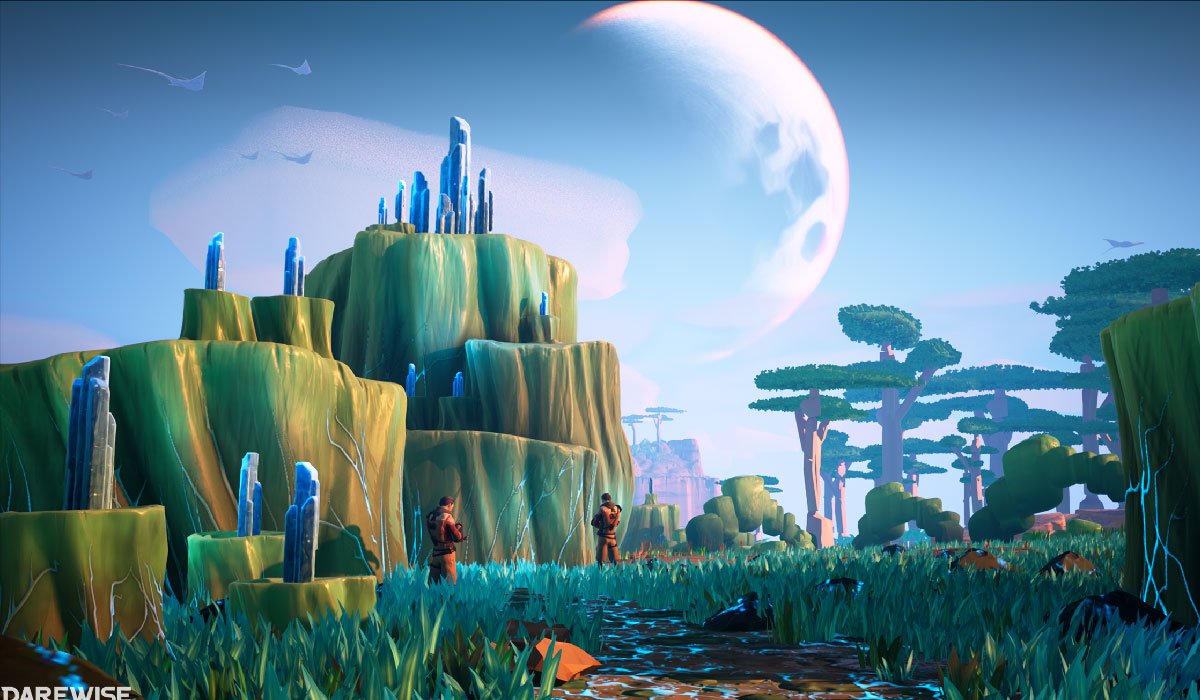Fashion
Tips for Building a Successful Career as an Environment Concept Artist

Environmental concept artwork stands as a fundamental component. It is known for turning visionary settings into realistic visuals across gaming, film production, and animated storytelling.
Understanding both necessary skills and tools and an appropriate mindset plays a vital role in succeeding as a developing artistic professional in this active field. These expert tips exist to direct novice and experienced artists who want to establish environments into professional careers.
- Master the Fundamentals of Art
Strong mastery of art fundamentals turns out to be essential before you focus on environment-specific techniques. These basics will elevate your ability to create compelling concepts:
- Perspective and Composition: Through proper technique, students can develop depth and structure for their artwork, which leads the viewer through the visual space.
- Color Theory: Understanding methods for selecting colors helps you both engage emotions and balance visual elements in your environmental concept artwork.
- Lighting and Shadows: Your ability to master lighting techniques will enable you to make environments dramatic while adding real depth.
Developing these essential skills provides you with essential tools for making visual and interactive world designs.
- Develop Technical Proficiency
The field of modern environment art demands that artists master industry-standard software programs. These include:
- 2D Tools: Design sketches and paintings require software applications, including Adobe Photoshop and Procreate.
- 3D Software: The software packages Blender, along with Maya and Cinema 4D, assist artists in their work to construct both precise layouts and rapid blackouts.
- Rendering Software: Visual representation of spatial composition together with lighting effects through real-time implementation becomes possible through unbiased software such as Unreal Engine or Unity.
Combining both 2D and 3D capabilities allows you to transform creative concepts into meaningful visual designs efficiently.
- Build a Diverse Portfolio
A portfolio that establishes itself as unique will make employers and clients more responsive. Focus on showcasing:
- Variety: Showcase versatility through a collection that combines natural environments, cityscapes, and fantastical settings.
- Storytelling: Create environments that both share narratives and produce emotional reactions.
- Work-in-Progress (WIP): Show your design progression through pictures of sketches along with thumbnails and breakdowns.
Present your current best work because your evolving professional achievement matters through your portfolio collection.
- Learn to Research and Reference
The construction of believable environments depends heavily on thoroughly understanding real-world elements. Use these strategies:
- Study Nature and Architecture: The study of landscape formations and architectural elements within real-world settings produces important knowledge.
- Use References: Use image references, sketches, and texture collections to motivate designs and establish their foundation.
- Stay Updated: Novel and emerging trends in games, films, and art help you understand the market’s tendencies.
Research provides two essential aspects for your design by granting it both authenticity and creative depth.
- Collaborate and Network
You will typically work with a team during the creation process for environment concept art. Build strong professional relationships by:
- Communicating Effectively: Your methods of idea delivery should be easy to understand while you also make smooth adjustments based on obtained feedback.
- Collaborating: You work together with character artists, modelers and directors to make your artwork stick to the project’s direction.
- Networking: Industry events and memberships with both online communities and art networks on ArtStation and LinkedIn help artists build their connections in the industry.
Your connections will lead to new learning possibilities and working alongside mentors while creating joint projects and developing career options.
- Embrace Continuous Learning
The development of environmental concept art continues to advance in new directions. Stay ahead by:
- Taking Courses: Participate in workshops together with online classes that offer education on newer visual tools.
- Studying Master Artists: The creative process behind masterpieces from industry icons needs analysis.
- Experimenting: Test your artistic limits by exploring fresh ways of creating with different artistic concepts and techniques.
To achieve lasting success, you need to be adaptable and demonstrate your dedication to personal growth.
- Build Resilience
Success in this industry requires determined effort because breaking through initial barriers proves difficult. Persistence proves essential in reaching your goal. Here’s how to stay on track:
- Set Goals: Establish both temporarily focused and permanently focused career-related objectives.
- Practice Consistently: Give each day a portion to develop your creative abilities.
- Handle Criticism: Use constructive feedback to make yourself better instead of letting it keep you from improving.
Fostering resilience will serve as your compass during the professional peaks and valleys that artists must face.
- Showcase Your Work Strategically
Career advancement needs the ability to be noticed by others. Here are ways to gain recognition:
- Online Platforms: Use ArtStation, Behance, or DeviantArt to share your artistic work.
- Social Media: Use Instagram, Twitter, and TikTok to expand your reach to new audiences.
- Participate in Contests: Becoming a winner in art challenges buffers your portfolio value while amplifying your professional recognition.
Continuous marketing of your artistic work enables you to rise above other artists in your competitive domain.
Conclusion
A successful environment concept artist career demands focused commitment, innovative thinking, and well-designed strategic maneuvers. Your ability to develop compelling worlds stands strong when you first master core concepts, adopt digital tools, and engage in ongoing development.
Through proper mindset development and resource utilization, anyone can transform from an aspiring artist to a professional in the industry. Take action now to turn your creative ideas into reality.
Why Choose MAGES Institute for Environment Concept Art?
At MAGES Institute, you will find specialized environment concept artist programs that deliver comprehensive training for professional artists. Under the guidance of experienced staff and through practical tasks and top-level facilities, MAGES provides the education necessary to build essential skills for industry success.
Start your career path toward environment concept art through enrollment in our creative learning community and embark on an adventurous artistic journey.
For More Information Visit Coopermagazine
-

 Celebrity1 year ago
Celebrity1 year agoWho Is Jennifer Rauchet?: All You Need To Know About Pete Hegseth’s Wife
-

 Celebrity1 year ago
Celebrity1 year agoWho Is Mindy Jennings?: All You Need To Know About Ken Jennings Wife
-

 Celebrity1 year ago
Celebrity1 year agoWho Is Enrica Cenzatti?: The Untold Story of Andrea Bocelli’s Ex-Wife
-

 Celebrity1 year ago
Celebrity1 year agoWho Is Klarissa Munz: The Untold Story of Freddie Highmore’s Wife
















